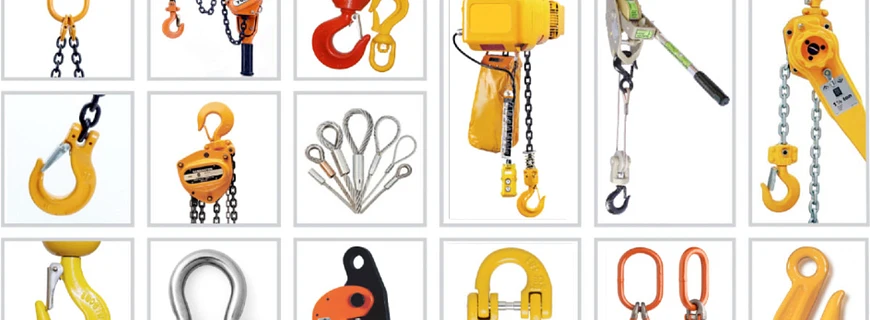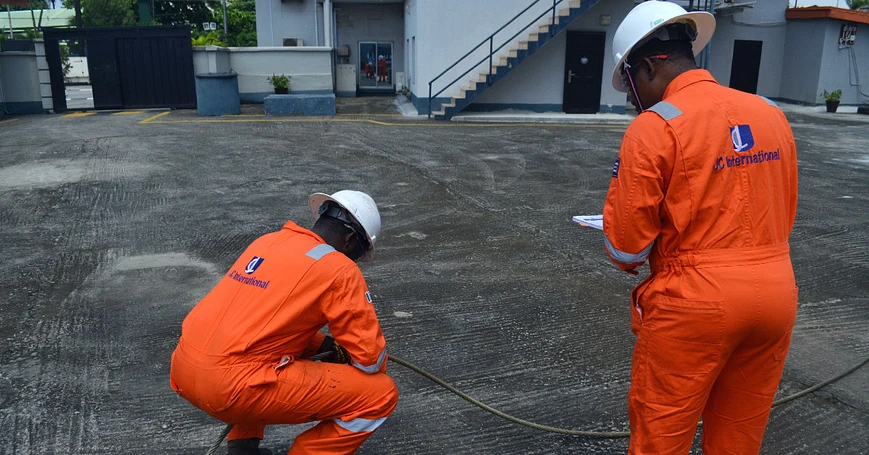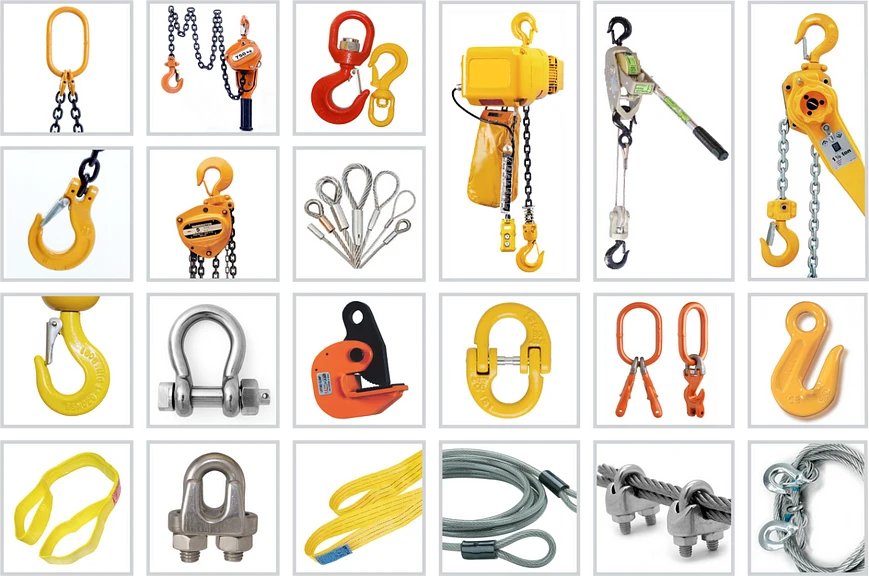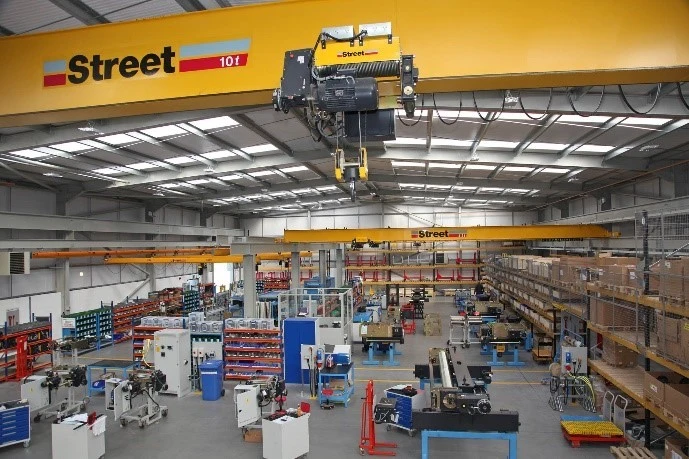SAFE USE OF LIFTING EQUIPMENT TRAINING

Safe use of Lifting Equipment Training The Golden Rule for Mechanical Handling & Lifting
Working with any lifting equipment can be dangerous because equipment with moving parts can cause injuries in many ways:
- People can be hit and injured by moving/rotating parts of machinery or dropped material. Parts of the body can also be drawn in or trapped between rollers, belts, chains, and pulley drives.
- Sharp edges can cause cuts and severing injuries, sharp-pointed parts can stab or puncture the skin, and rough surface parts can cause friction or abrasion.
- People can be crushed both between parts moving together or towards a fixed part of the lifting appliance, wall, or other object, and two parts moving past one another can cause shearing.
- Lifting equipment or attachments can become unreliable and develop faults due to poor or no maintenance, or machines may be used improperly through inexperience or lack of training.
So, the regulations require duty holders to make sure that when using any lifting equipment, the requirements of LOLER are met. For example, you should make sure that all lifting equipment is:
- Sufficiently strong, stable, and suitable for the proposed use. Similarly, the load and anything attached must be suitable.
- Positioned or installed to prevent the risk of injury, such as from the equipment or the load falling or striking people.
- Visibly marked with any appropriate information to be considered for its safe use, e.g. safe working loads (SWL).
As a duty holder, therefore, it is important to follow LOLER when using lifting equipment to ensure the safety of the equipment and those involved in the operation. All the information you need to know when organising lifting is included in the Lifting Regulations and Lifting Equipment Regulations (LOLER) and Provision of Work Equipment Regulations (PUWER).

Golden Rules
Do not operate any lifting equipment unless
- It has been approved for use
- The lift has been assessed by a competent person
- The load has been slung by a competent person
- The load is within the capacity of the equipment
- All safety devices are working
Do not
- Move a load above people
- Position yourself below a suspended load
We have established that unsafe lifting practices which includes incorrect use of lifting equipment, result in numerous incidents every year, including serious and sometimes fatal accidents. The golden rules are not limited to the ones listed above and could also include:
- All lifting operations should be planned and be supervised where applicable.
- Lifting equipment and accessories must only be used for the purpose for which they were designed
- Lifting equipment and accessories must only be used by trained personnel or under strict supervision.
Safe Approach
- Personal Competence
Any person using lifting equipment must be trained in the safe use of that equipment. The person must also have a working knowledge of its capabilities and the defects likely to arise in service.
- Never Exceed Working Load Limit (WLL)
In every lifting operations care should be taken to ensure that the load imposed on any item of the equipment or on part of any item does not exceed its SWL/WLL. When there is any uncertainty about the weight of the load, or the load applied to a particular part of the equipment it is recommended that load sensors/load cells are used.
- Correct Use
The lifting equipment should only be used for the specific purpose for which it is designed and should not be adapted for other purposes.
- Misuse of Equipment
The use of lifting equipment beyond its SWL/WLL is strictly forbidden. Attention must be given to the avoidance of overloading, incorrect slinging and trapping of slings between the load and floor or associated appurtenances.
- Planning and Risk Assessment
Fundamental part of legislation that requires all lifting operation must be planned and risk assessed to determine the nature and level of risks which must then be managed to reduce to them to as low as reasonably practicable.
- Selection of equipment
When selecting lifting equipment, the working conditions that the equipment will be used in must be considered. The tasks that the equipment will be required to do (such as consideration of the loads to be lifted); and relevant existing risks as well as those risks that will be introduced with the new equipment must also be checked. The stability of the equipment for the proposed use such as hydraulic jacks should be stable during use under all foreseeable conditions.

Personal Competence – Training
Employers must provide suitable training to employees and must restrict the use of lifting equipment to trained, authorised employees. As well as training in the use of the equipment, employees must be aware of the hazards associated with the use of the equipment and in the control measures to be used to avoid or control the risks.
Training (and re-training) therefore forms an essential aspect of building the right level of competence to manage lifting operations and ensure that all the factors that guarantees safe lifting operation should be considered for every operation.
Benefits of Training – LOLER
- Regulation 4 (Strength and Stability),
- Regulation 6 (Positioning and Installation),
- Regulation 7 (Marking of Lifting Equipment),
- Regulation 8 (Organisation of Lifting Operations) and
- Regulation 9 (Thorough Examination and Inspection)
The regulations above provide specific guidance and requirements that focuses on the knowledge and training needed to develop skills, that when used effectively, will promote safe use of lifting equipment.
The main benefits of organised and structured training will:
- Maintain the competence of those responsible for safe use of lifting equipment
- Meet all associated regulatory requirements, applicable regulations, and standards
- Assure the development of a safe and proper system of work to ensure lifting equipment are safe for use and inspected regularly.
The stages are listed below.
Four Key Stages in Achieving Competency through training
Stage 1
The first stage of all training comprises initial training and assessment, which is typically carried out at an onshore training establishment and identified as Stage 1.
Stage 2
After Stage 1, the level of competency is deemed sufficient for that person to conduct lifting operations – selection of lifting equipment under the direct supervision of a competent person as part of their Stage 2 training, i.e. supervised training and the practical application of the learning obtained in Stage 1.
Stage 3
This stage refers to an ongoing workplace assessment of competency. At this level, having covered the outlines of course in practice, the person can assume the level required to manage lifting operations.
Stage 4
This stage refers to the ongoing performance development with re-training as part of company overall competency system.
To conduct safe lifting operations to today’s high standards, employers must have a system in operation which permits personnel to progress through the stages to become competent to manage lifting operations and to maintain this competence.

Other training providers conduct a robust 2- 3 days intensive training which covers all the elements Safe Use of Lifting Equipment with particular emphasis on:
- The Law, Standards and Legal Requirements. Including the Health & Safety at Work Act, LOLER, PUWER, Supply of Machinery (Safety) Regulations, and recognised codes of practice.
- Principles for the Selection of Lifting Equipment. Marking, storage and handling, pre-use inspection, assessing the operation, and certification.
- Lifting Procedure covering general Lifting Operations
- The selection and use of lifting equipment, machines and supporting structures
- The selection and safe use of lifting accessories
Certification and Award
LEEA Certification
At JC International, our accreditation with OPITO, LEEA, IADC, ISO 9001 and other relevant professional trade associations, ensures we deliver training, certification and qualifications in accordance with awarding bodies and approved codes of practice.
Our focus as a prominent oil and gas training provider is to provide a world-class training and certification service to ensure that our candidates gain the required competence and realise their full potentials.

Leave a Reply